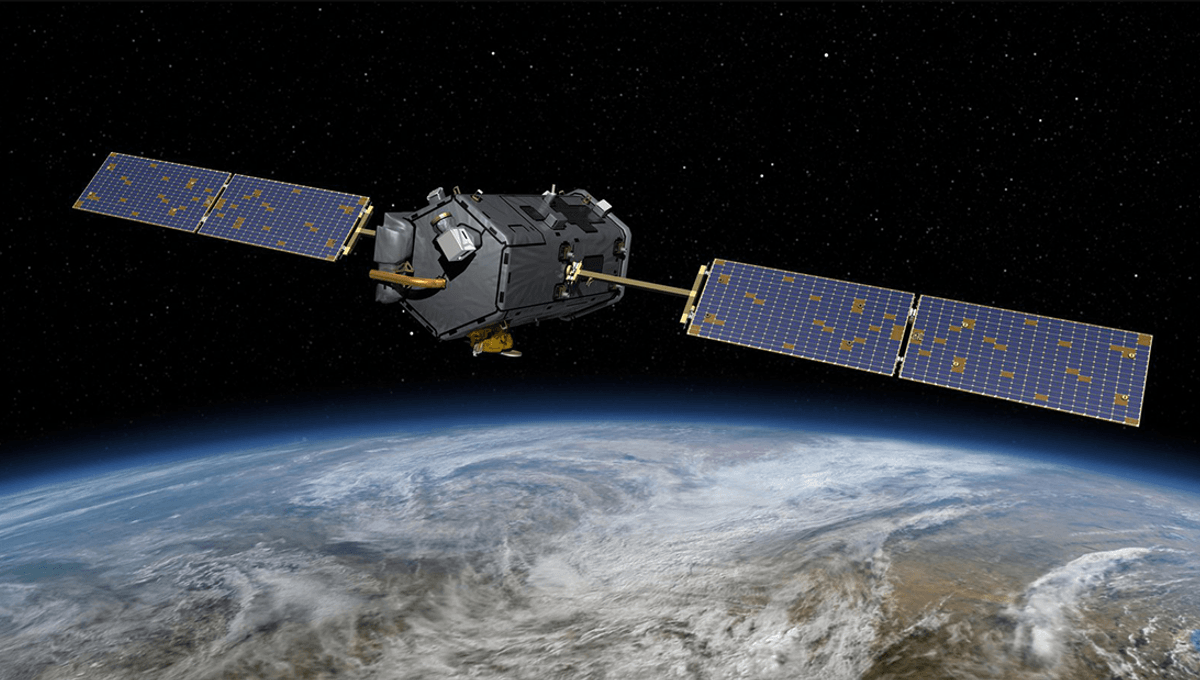
NASA has begun planning to end the mission of several important satellites at the request of the Trump administration, according to a report by NPR.
In 2009, NASA launched the Orbiting Carbon Observatory (OCO), an orbiting satellite designed to take precise measurements of carbon dioxide in Earth’s atmosphere and help guide our response to climate change. Unfortunately, after launch, the satellite failed to detach from its fairing and did not make it into its planned orbit. A few years later, in 2014, NASA launched OCO-2, which has been providing useful data to scientists since.
“OCO-2 collects a great number of high-resolution measurements, which provides a greater spatial distribution of CO2 over the entire globe; in short, a bigger, clearer, more complete picture of global CO2,” NASA explains of the satellite. “These measurements are combined with data from the ground-based network to provide scientists with the information that they need to better understand the processes that regulate atmospheric CO2 and its role in the carbon cycle. This enhanced understanding is essential for improving predictions of future atmospheric CO2 increases and its impact on Earth’s climate.”
The satellite actually performed a lot better than anyone was expecting, becoming the “gold standard” in space-based carbon dioxide measurements.
“The mission has also uncovered insights into CO2 emissions from cities, and contributes data supporting the Paris Agreement,” NASA’s Jet Propulsion Laboratory adds. “As an unexpected bonus, OCO-2 has even been able to track growing seasons and crops by measuring the ‘glow’ plants emit when they photosynthesize.”
Data produced by the satellite has been used to create maps of photosynthesis on Earth, providing useful data to farmers as well as scientists, as they monitor farmland, crop yield, and drought.
Unfortunately, the satellite – and a second OCO instrument attached to the International Space Station (ISS) – are now in the firing line from the Trump administration, despite being operational and functional. According to a former NASA employee who spoke to NPR, two anonymous current NASA employees, as well as other scientists who conduct research using the satellites’ data, the agency is now planning for the termination of these missions.
“What I have heard is direct communications from people who were making those plans, who weren’t allowed to tell me that that’s what they were told to do. But they were allowed to ask me questions,” David Crisp, a retired NASA employee who helped design the instruments, told NPR. “They were asking me very sharp questions. The only thing that would have motivated those questions was [that] somebody told them to come up with a termination plan.”
While that is not great news for anyone who thinks we should at least try to monitor CO2 levels during the climate crisis, it isn’t a done deal quite yet. NASA is currently seeking private funding to keep the instrument attached to the ISS running after US funding dries up, until the end of the ISS’s own mission. Meanwhile, Democrats are warning NASA not to end missions that Congress has already funded.
“Congress has the power of the purse, not Trump or Vought,” Representative Zoe Lofgren, the ranking Democrat on the House Committee on Science, Space and Technology, told NPR. “Eliminating funds or scaling down the operations of Earth-observing satellites would be catastrophic and would severely impair our ability to forecast, manage, and respond to severe weather and climate disasters. The Trump administration is forcing the proposed cuts in its FY26 budget request on already appropriated FY25 funds. This is illegal.”
As well as being detrimental to climate science, terminating the project would be a fairly spectacular waste of money already spent on it. The vast majority of the budget – around $750 million – went into design, manufacture, and launch, while maintenance only costs around $15 million a year, a small price for such valuable data.
While the instrument attached to the ISS (OCO-3) could be recovered if the mission was terminated and the decision was reversed later, for OCO-2, termination would be terminal, as the satellite would burn up in Earth’s orbit. Once again, a NASA mission – funded and fully operational – is looking at an uncertain future.
Source Link: "This Is Illegal": NASA Reportedly Ordered To Destroy Important OCO Satellite